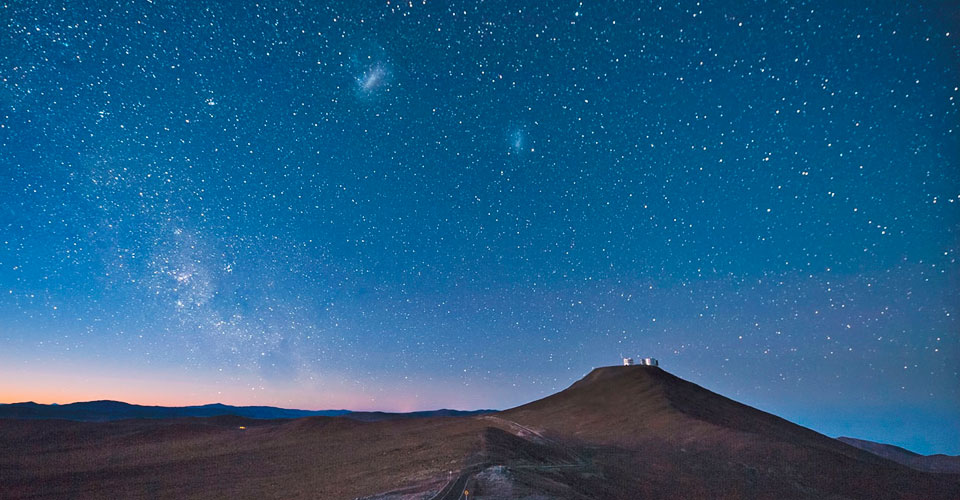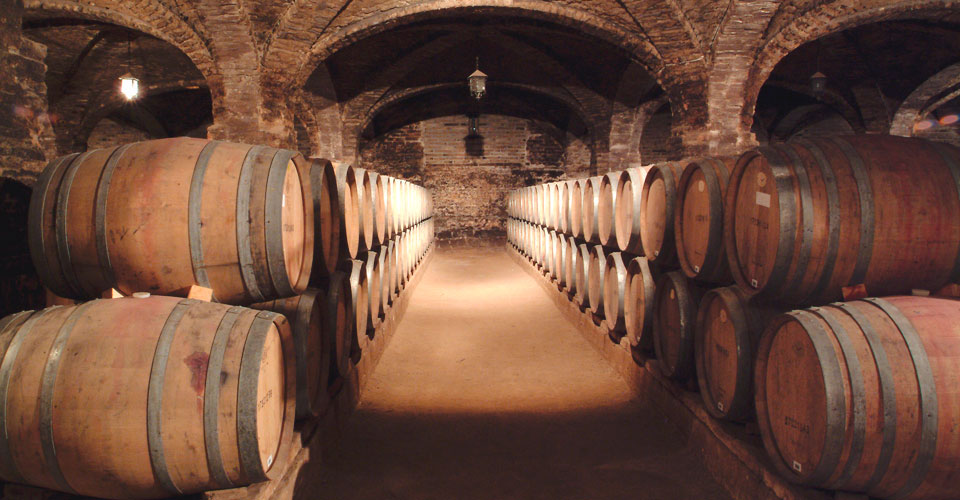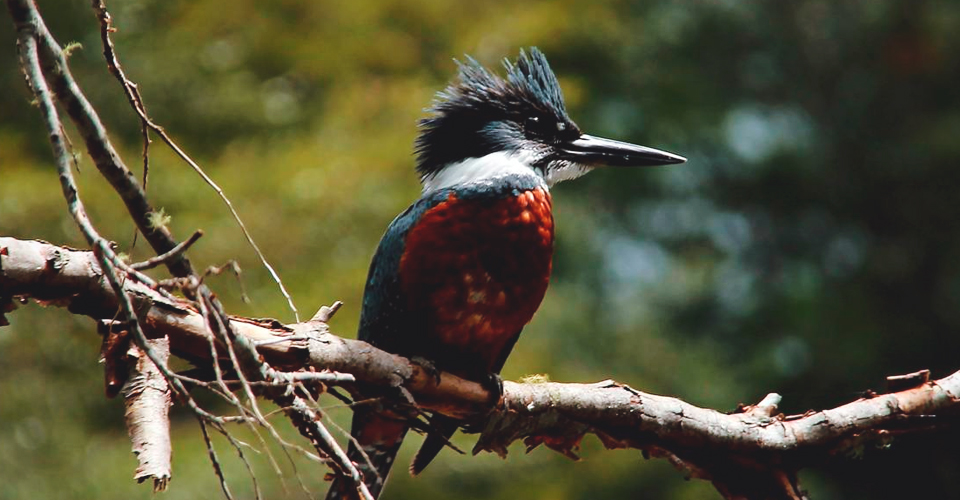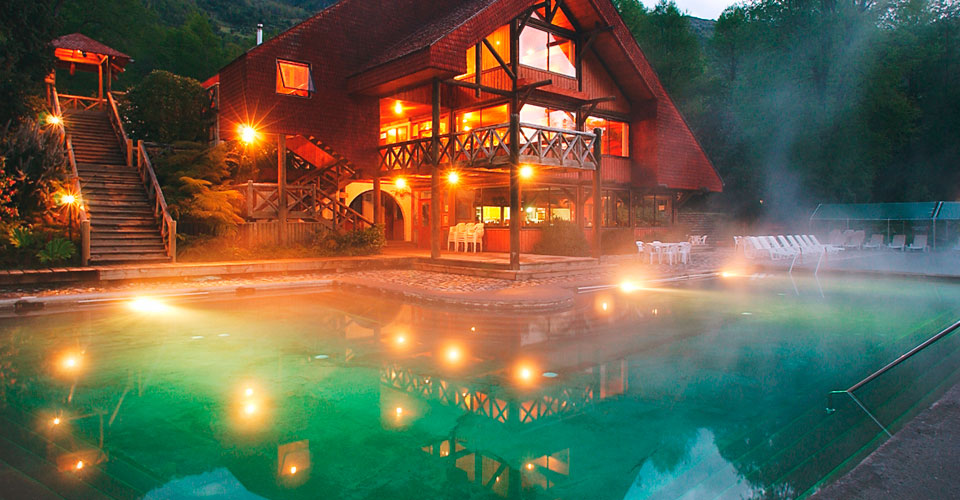National Parks and Trekking
Ten National Parks you should not miss!
Are you a true adventurer? Do you enjoy trips, flora and fauna, walking and enjoying these experiences? If all your answers are positive, we have created a list of 10 National Parks you must visit.
1) Lauca National Park -Region of Arica and Parinacota
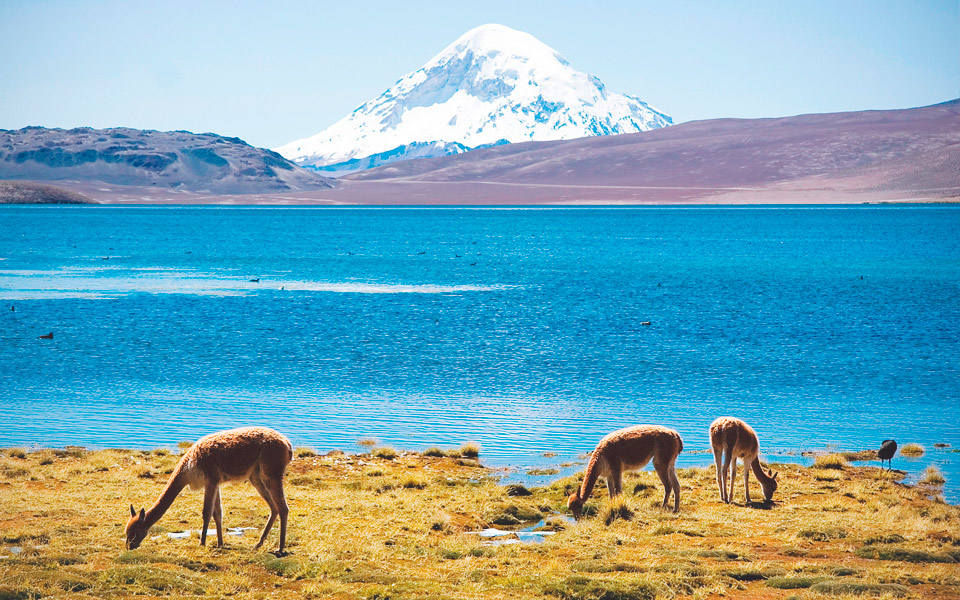
It is a park located in the Region of Arica & Parinacota, in the Putre Community. Because it is located in the foothills or "Precordillera" and the High Plateau or "Altiplano", this gives you the opportunity to explore its landscaping beauty, specially the views of the famous "Lago Chungará", Cotacotani Lagoon, and the Payachatas Volcanoes.
Due to protected species of the area, it is possible to observe some of these species, such as Vicuña, Puma, Fox, Guanaco, Vizcacha, and also you can observe a big variety of birds that nest in the wetlands or "Humedales".
Main Trekking Paths: Las Cuevas, Chacu, Parinacota, Chungará, and Cotacotani.
This park shelters exceptional summits to go mountain climbing, which reach altitudes of 6.000 meters above sea level. The summit highlights are Parinacota Volcanoes, reaching 6.342 meters above sea level, Pomerape with 6.282 meters above sea level, among others. In the High Plateau sector, there are volcanic cauldrons such as Ajoya, and the Tejene, together with lava fields such as the Cotacotani.
A second important highlight is its cultural patrimony with the presence of the Aymara Culture, and its rich archeology.
Access: The main access is through Carretera CH-11, which joins the town of Arica and Tambo Quemado. The access crosses the park from the center.
Activities: Observation of Flora and Fauna, Trekking, Mountain Climbing, and taking photographs.
Highlights: The Parinacota, Pomerape, Guallatire and Acotango Volcanoes, cauldrons such as Ajota and Tejene, Rivers Lauca and Luta, Cotacotani Lagoon, and Chungará Lake.
2) Pan de Azúcar National Park-Regions of Antofagasta and Atacama
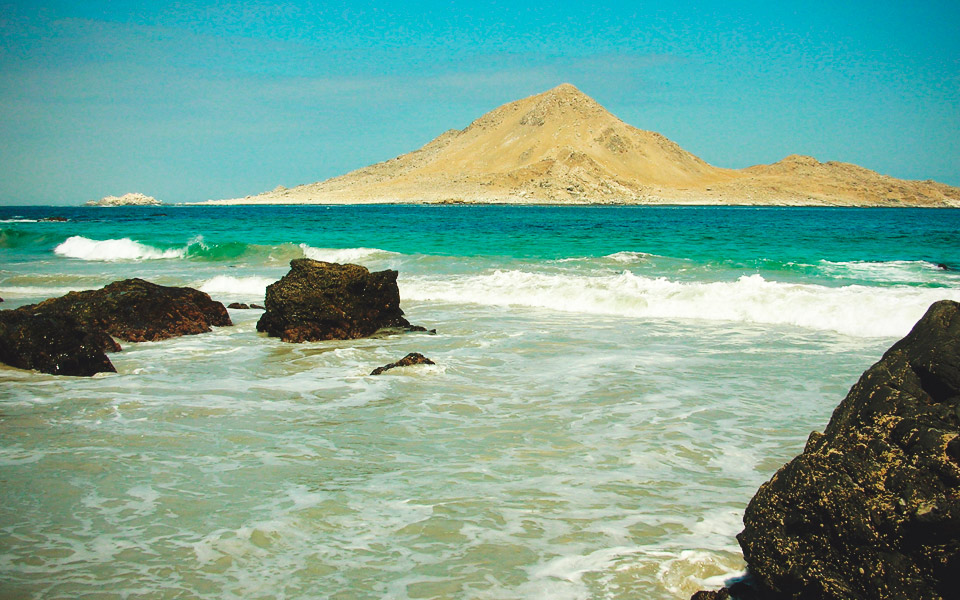
The park is located in the coastal zone, of the regions of Antofagasta and Atacama, with a total surface of 43.739 hectares.
Its relief is one commonly seen in the coastal desert, comprised by a Coastal Farellón of 800 meters above sea level, and by a narrow coastal plain. It is highlighted by its island named Pan de Azúcar, and also known for the coaster that has the same name where you can observe traditional fishermen.
Is is famous for sheltering protected species such as the Guanaco, Humboldt Penguin, and the Yunco Duck. Concerning Flora species, the existing species got accustomed to the lack of water of the area.
Main Trekking Paths:Sendero Mirador, Sendero Vehicular Los Lomitas, Sendero Aguada Los Sapos, Sendero Quebrada del Castillo.
Access: Route C-120, which joins Chañaral and the administration of the National Park.
Activities: Cycling, Scuba Diving, sport fishing, boat expeditions, Kayaking, Flora and Fauna Observation.
Highlights: Isla Pan de Azúcar, Humboldt Penguin.
3) Nevado Tres Cruces National Park
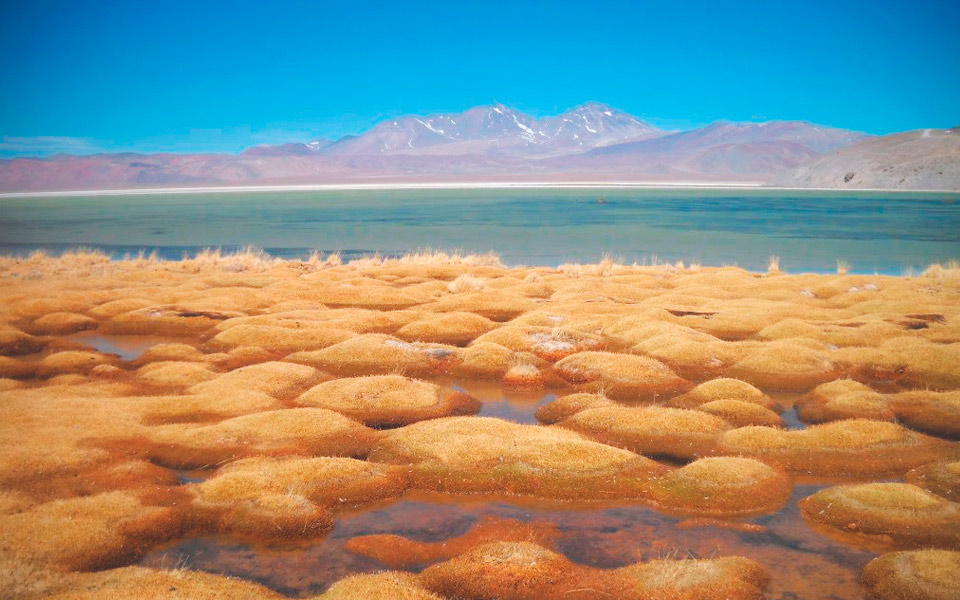
The National Park is located in the región of Copiapó and Tierra Amarilla, with a surface of 59.081 hectares. The true highlights are the 77 protected species in the park, organized in 26 families and 49 genres. From all this big variation of species 62 correspond to birds, 11 to mammals, and 4 to reptiles. Concerning Flora Life, we can find about 65 species, which are grouped into 23 families and 42 genres.
Main Trekking Paths: The sections of Laguna Santa Rosa-Salar de Maricunga, Laguna del Negro Francisco, Mirador Laguna Santa Rosa, Laguna del Negro Francisco-Laguna Salada, Mirador Río Lamas.
Access: International route CH-31, through de San Francisco Passage or "Paso San Francisco"
Activities: Hiking, trekking, high mountain climbing, Flora and Fauna Observation.
Highlights: Copiapó Volcano, Lagoons: Laguna del Negro Francisco, Laguna Santa Rosa, Rivers and Wetlands or well-known "Humedales".
4) Radal Siete Tazas National Park - Region of Maule, Curicó, and Talca
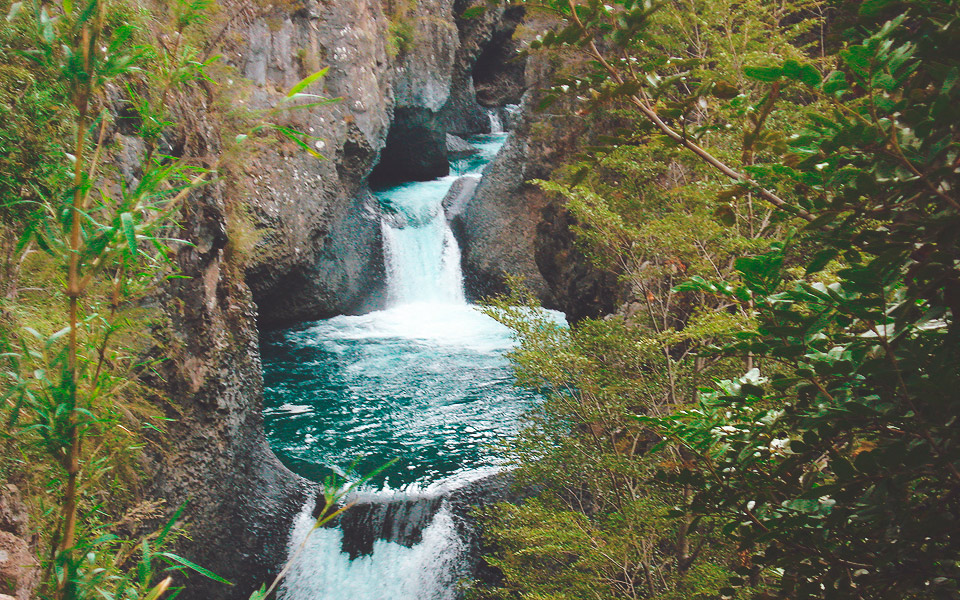
The Park is located in the Maule Region, in the Curicó town, Colina community. Is is located in the Andean Precordillera, and has a surface of 1.009 hectares. The park is characterized by protecting species such as the Pudú, Tricahue, and Condor. Concerning Flora Species, you can find the Raulí, Roble (Oak), Coigue, and Maitinén, among other species.
Its main highlight is the "Pozones" or Falls generated by Río Claro. In the park you will find the Salto de la Leona and the Velo de la Novia.
Main Trekking Paths: Valle del Indio, Los Chiquillanes, La Montañita, the Sendero Interpretativo Salto la Leona, and El Coigue.
Access: Through the road which unites the city of Molina with the Sector Cordillerano, known as Parque Inglés.
Activities: Trekking, Horseback riding, fishing areas.
Highlights: Radal Siete Tazas, Salto Leona, and Velo de Novia.
5) Conguillío National Park
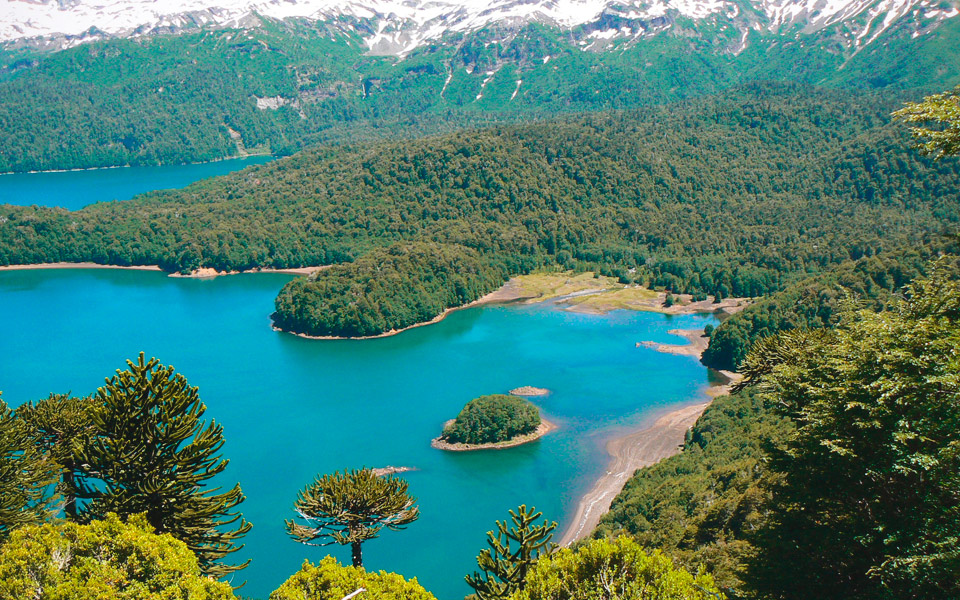
The Park is located in the Region of la Araucanía, in the provinces of Malleco and Cautín.
The presence of Llaima Volcano (3.125 meters above sea level), is the main change of the settings of Lago Conguillío, a lake of pure and crystal waters, which freeze during winter time. You can observe wild landscapes made of big accumulations of volcanic lava, extensive forests of Araucarias sharing the land with other species.
The park is highlighted by the protection of Fauna species such as the Guiña, the black-neck swan, Lagartija Café con Rayas, Sapo de Papilas, and the fresh-water Tollo. Concerning Flora life, you will find the Araucaria, Ciprés de la Cordillera, and the Lleuque.
Main Trekking Paths: Sierra Nevada, Pastos Blancos, Contrabandista, and Las Vertientes.
Access: From the Ruta Temuco- Cunco – Melipeuco, from the north through Victoria and Lautaro-Caracautín. On the western side from Temuco-Cajón-Vilcún-Cherquenco-Sector Las Paraguas.
Activities: Flora and Fauna Observation, Trekking, Cycling, and Kayaking.
Highlights: Arcoiris Lagoon, LLaima Volcano,Conguillío Lake.
6) Puyehue National Park
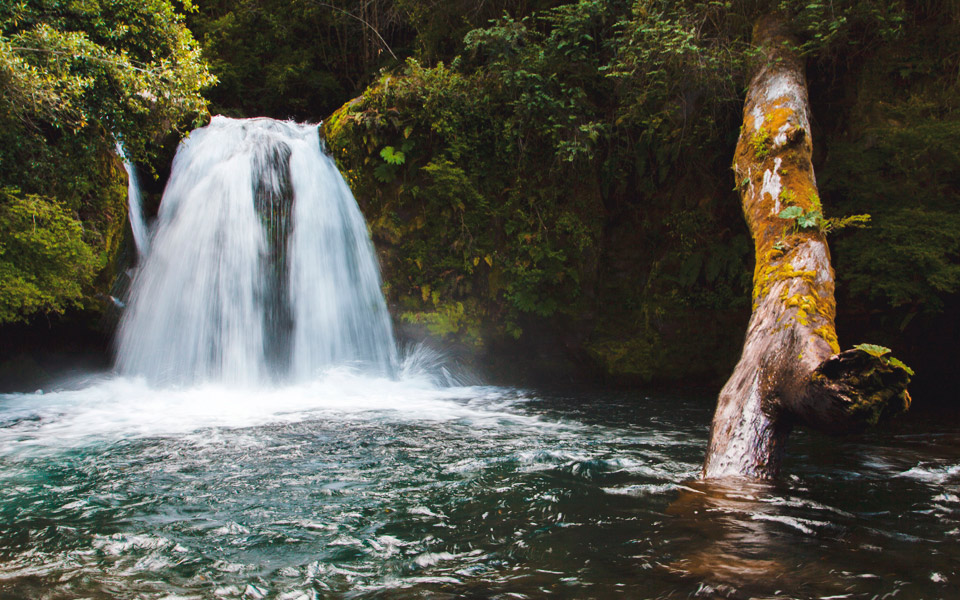
It is found in the foothills and the Andes Mountain, in the city of Puyehue, including the Osorno and Valdivia provinces.
Protected Fauna species of the park are: the Puma, the Grey Fox, the Quique, and the Coipo. Concerning vegetation, it refers to the dominance of the mild Rainforest, made by different stratums, and a rich composition of species. Some of them are, the Ulmo and Coihue, accompanied by the Olivillo and Tineo. The "Sotobosque" has abundant bushes, lianas, ferns, moss, lichens, and in high latitude areas there are big Coihues. The Park is divided into three sections which are: Antillanca, Anticura, and Aguas Calientes. The first section or "Antillanca" includes de a Ski Center at the skirts of Casablanca Volcano. Anticura shelters the Saltos de Agua, the Mirador "del puma" and the majestic Puyehue Volcano, of an amazing altitude of 2.240 meters.
The third sector or area, Aguas Calientes is a small resort.
A different highlight is Rupanco Lake, with calm waters, native wilderness, islands, where you can enjoy nautical sports and go fly fishing.
Main Trekking Paths: Anticura-Salto del Indio, Anticura-Salto de la princesa, Anticura salto pudú, Aguas Calientes-Lago Paraíso.
Access: through the International route CH 215, joining the cities of Osorno and Bariloche. In Kilometer 76 of the route you will find a variant U-215, which is directed towards the Aguas Calientes Sector and Antillanca.
Activities: Snow sports, hiking, swimming, trekking, fly fishing, kayaking. Highlights: Puyehue Volcano, Casablanca Volcano, and the Section of Anticura and Antillanca.
7) Vicente Pérez Rosales National Park
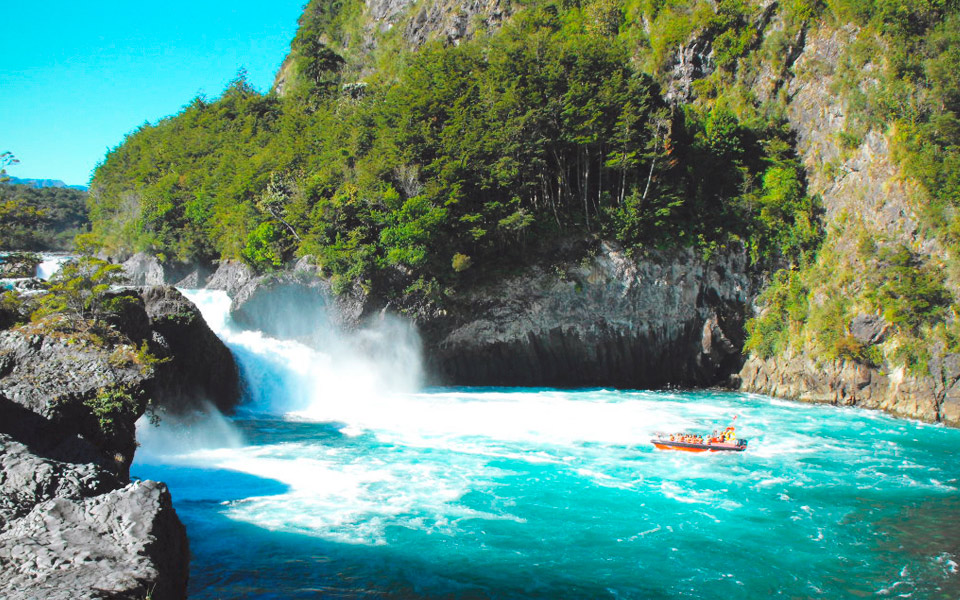
The Park is located almost as a whole in the province of Llanquihue, except the area which corresponds to Osorno.
It is highlighted by Osorno Volcano, a perfect iconic volcano showing great beauty, as well as well-known Saltos de Petrohué, which form a torrential and foamy waterfall born from a Volcanic Rock Canyon dug by lava. On the other hand the "Lago Todos Los Santos", is greatly characterized by its intense turquoise color. The forest presents characteristics of Mild Rainforests and Ever-green Forests.
Main Trekking Paths: Rincón de Osorno, El Solitario, Valle de Callao, Cerro Riggi, Los Pumas, Laguna Verde, Cascada de los Enamorados or "The Lovers Waterfall", the Saltos, and Osorno Volcano. Access: International route 225 Puerto Varas-Ensenada and Petrohué, which joins one of the cities of Puerto Varas and Bariloche, crossing theTodos los Santos Lake".
Activities: Trekking, Snow Trekking (in the Winter Season), Mountain Climbing, Climbing, Bicycle Riding, River Kayaking, Recreational Fishing, and "Avifauna" Observation.
Highlights: Lago todos los Santos, Osorno Volcano, Saltos de Petrohué, Laguna Verde.
8) Chiloé National Park
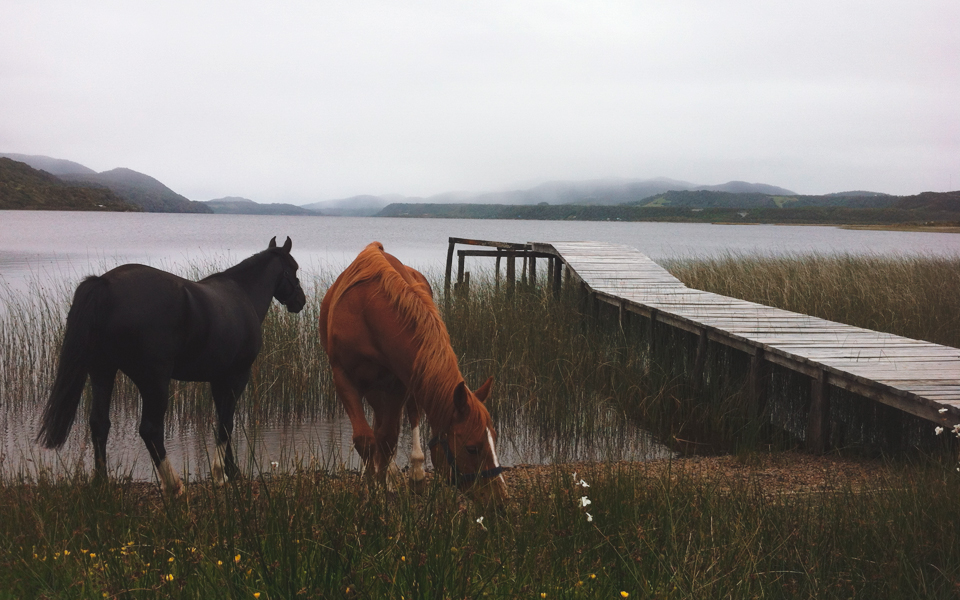
In is found in the Los Lagos Region, in the Isla Grande de Chiloé. It includes two main sectors, Chepu and Abtao, which are part of the cities of Castro, Chonchi, and Dalcahue.
It is characterized by the protection of rich species such as, Zorro Chilote or "Chilote Fox", Monito del Monte in Chiloé, Ratón Topo in Chiloé, Marine Otter, among others. Concerning Flora species, in the areas of drainage and cliffs, the steppe is present, linked to the Species of Olivillo and Coigue. Over 600 meters above sea level, we can find the Teú and Ciprés de Guaitecas. Chiloé was one of the places visited by Charles Darwin during his pass through South America as part of his study of species, because of the big variety of Flora and Fauna present in Chiloé Island.
Access: From Puerto Montt to Isla de Chiloé by taking the ferry, after the Cucao-Chanquin Sector you will arrive to Ruta 5 from Castro, the ferry crosses the Notuco Crossing which leads to Cucao.
Activities: Boat Ride, Excursions, Flora and Fauna Observation, sport fishing.
Highlights: Lagoons, extensive beaches, dunes and coastal zones or "Litorales".
9) Queualt National Park
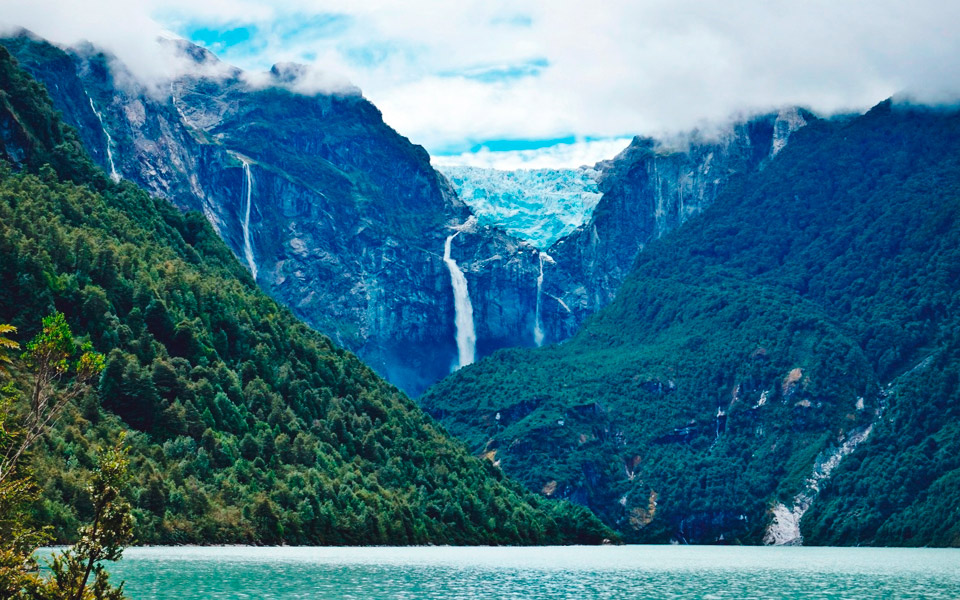
Is is found in the Region of "Aisén del General Carlos Ibáñez del Campo", to the south of Chaitén and at 165 kilometers from Coyhaique.
With a landscape highlighted by "Ventisqueros", being a hanging Ventisquero, the most important one located at 7.800 meters above sea level, "Portezuelos", Saltos, Forests, Fjords, Lakes and Lagoons. The vegetation of the area is truly beautiful, surprising its visitors with Ever-green Forests of particular geography, with Risopatrón Lake, del Cóndor falls, and the Ice floe Lagoon, which are some of its characteristic highlights.
It is characterized by protected Species of Fauna, Birds such as the Black Woodpecker or "Carpintero Negro", the Cóndor and the Chucao. Among the mammals we will find the Pudú, Guiña, and the Puma. Amphibious species include the Sapito Cuatro Ojos. While in Flora there are interesting species found in the Andes Patagónicos, such as the species of Lenga, Coigue de Magallanes. In the ever-green forests and peatlands or "Turberas", you can find the Coigue de Chiloé, Tepa, and Canelo.
Access: Route 7 crossing a big part of the topography of the park. Therefore you can directly reach the Park through the "Carretera Austral".
Activities: Fishing, Mountaineering, Trekking, Flora and Fauna Observation, Photography, Navigation and Cultural Paths.
Highlights: Capillas de Mármol, the Laguna Témpanos, Lago Risopatrón, Seno Queulat, and the Salto Padre García and Salto Cóndor.
10) Torres del Paine National Park
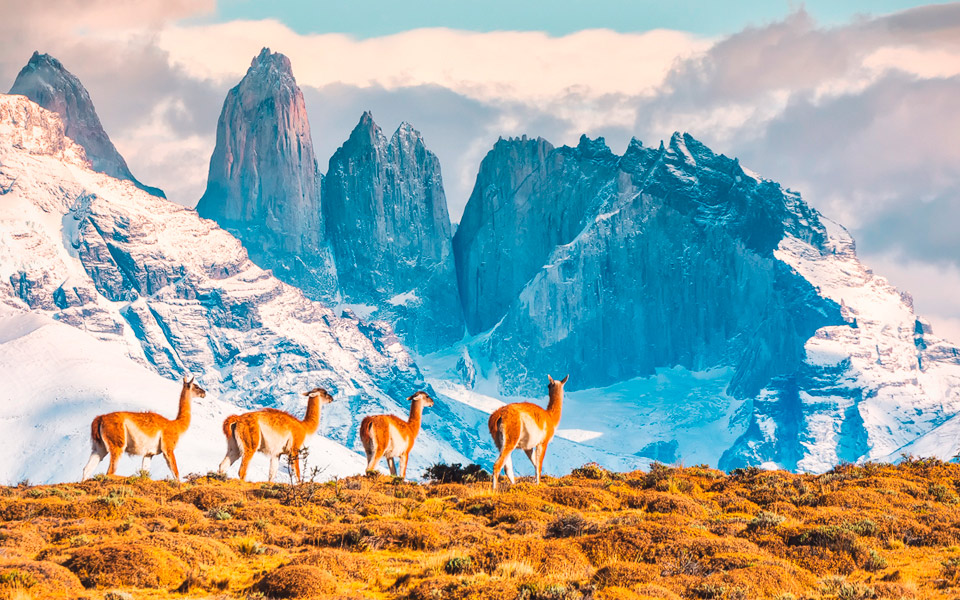
It is located in the Region of Magallanes and the Chilean Antarctica, in the community of Torres del Paine, in the province of "Última Esperanza".
It is known in the world as the Macizos, which give the name to the Park, Granite Giants modeled by the force of Glacial Ice. It is one of the most beautiful places and southernmost areas of the world, which shares multiple landscapes of wildlife and nature which make this a unique place.
It is highlighted by the protection of Fauna species such as the Ñandú, Blanquillo, and Lechuza. Concerning mammal species, there are about 25 species inside the park, only to the name a few, we can find the Puma, Chingue, Zorro Colorado, and also has reptile species, amphibians, and fish. Concerning Flora there are 274 species of plants classified in Patagonian Steppe, Andean Scrubland, Magellan Forest (where Lenga predominates) and the Andean Desert.
Access: through the paved road between Punta Arenas and Puerto Natales, and can be accessed afterwards by the Ruta 9 Norte.
Activities: Horseback Riding, Navigation, Kayaking, Fauna and Flora Observation, Highlights: Grey Glacier, the Pehoé Lake, Lake Nordenskjold, Lake Paine, Serrano River, the "Macizos del Paine", and the characteristic Torres or "Towers", among others.


